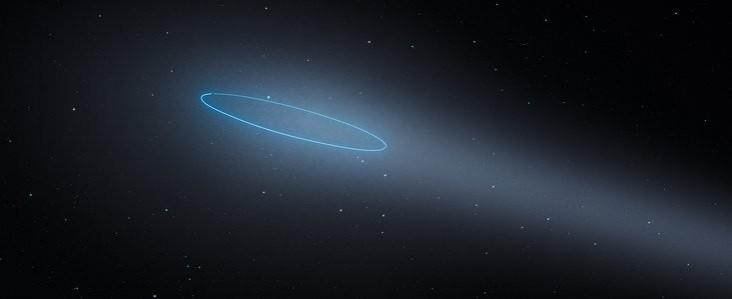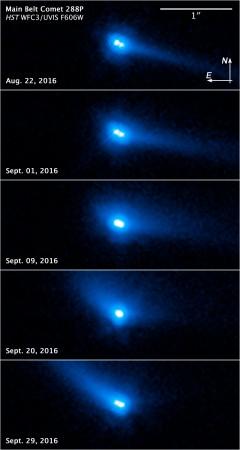
A group of German researchers has spotted a unique asteroid with the help of NASA's Hubble Space Telescope. This space rock got the features of an asteroid as well as a comet.
The team of researchers was lead by Jessica Agarwal of the Max Planck Institute for Solar System Research, Germany.
ALSO READ: Closest ever supermassive binary black hole system discovered by 2 Indian scientists
Here's all you need to know about this asteroid:

1. Dubbed as 300163 (2006 VW139), the object was found by the Hubble Space Telescope in September 2016, which is present in the asteroid belt between Mars and Jupiter.
2. The object was found to produce a comet-like tail which was made up of debris. It also had a bright halo which comprise of a material known as coma which made the astronomers classify it as a comet.
ALSO READ: NASA's Cassini captures mysterious glitch 'Peggy' in Saturn's rings: 7 things to know
3. Initially, when this object was spotted by Hubble in 2016, it was believed to be a single asteroid. It was later found that the space rock was not alone and it was orbiting another asteroid which was at a distance of around 96.57 kilometres (60 miles) forming a 'binary asteroid system'. Binary asteroid is also known as a main-belt comet.
4. The size and mass of both these space rocks was found to be almost the same, also high eccentricity orbit, wide separation among the asteroids and comet-like activity were observed. These features of the binary asteroid system make it different from the few other binary asteroids known so far.

5. The first binary asteroid captured was 300163(2006 VW139), NASA's Spacewatch and Pan-STARRS asteroid analysing projects had observed this binary system initially, Spacewatch had seen it in November 2006 whereas Pan-STARRS had seen it again in November 2011. After being observed by Pan-STARR, this object was also designated as comet 288P.
6. According to the astronomers, the binary system 2006 VW139 is estimated to be around 5,000 years old. The researchers speculate that the celestial object must have split into two because of its fast rotation.
ALSO READ: NASA's Hubble reveals more about mysterious pitch black exoplanet: Top things to know
7. The two fragments are likely to have moved further away because of the impact of ice sublimation which might have provided a tiny push to an asteroid in one direction as the water molecules are released in the other direction.
"We detected strong indications for the sublimation of water ice due to the increased solar heating — similar to how the tail of a comet is created," Agarwal said.
"We need more theoretical and observational work, as well as more objects similar to this object, to find an answer to this question," Agarwal stated.
The researchers believe that more information about the origin and evolution of the binary asteroid system would shed insights into the early days of the Solar System.





!['Lip lock, pressure, pyaar': Vidya Balan- Pratik Gandhi shine in non-judgmental infidelity romcom Do Aur Do Pyaar [ Review]](https://data1.ibtimes.co.in/en/full/797104/lip-lock-pressure-pyaar-vidya-balan-pratik-gandhi-shine-non-judgmental-infidelity-romcom.jpg?w=220&h=138)







